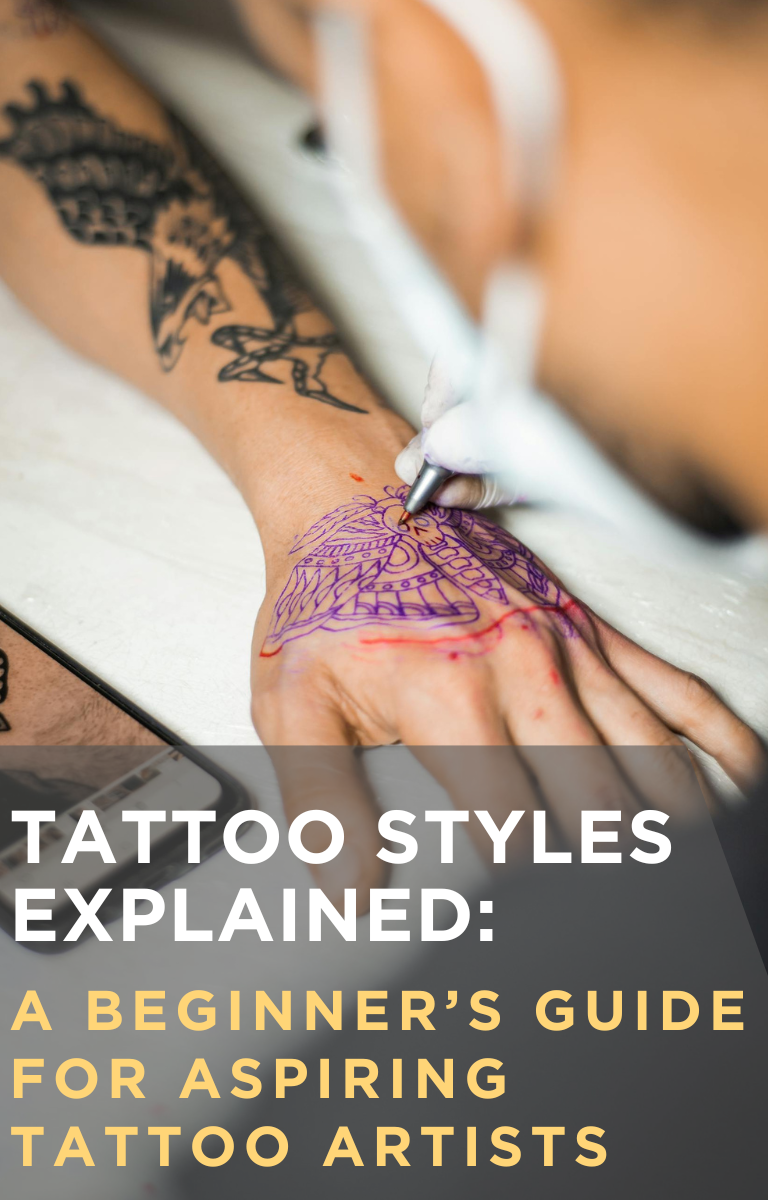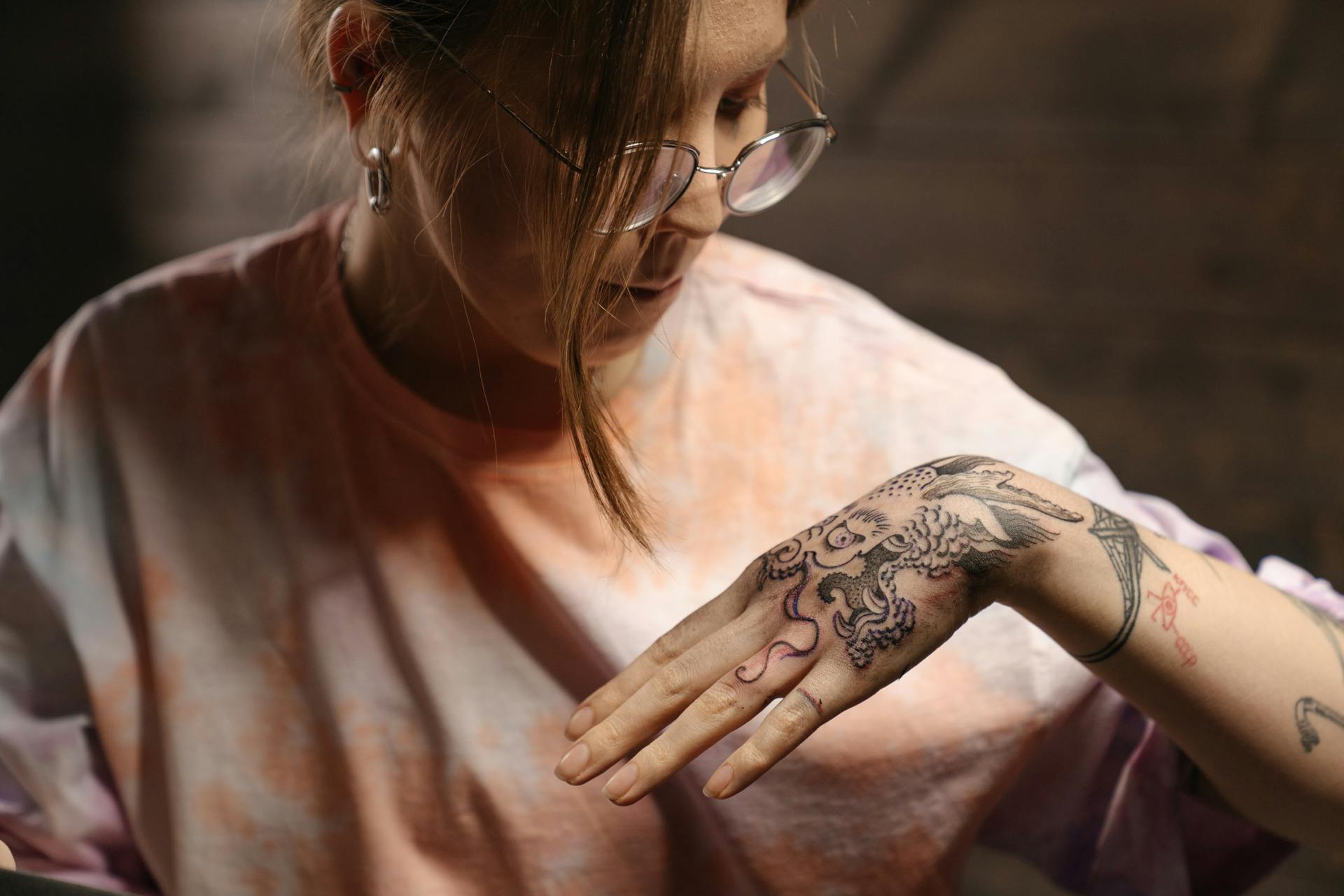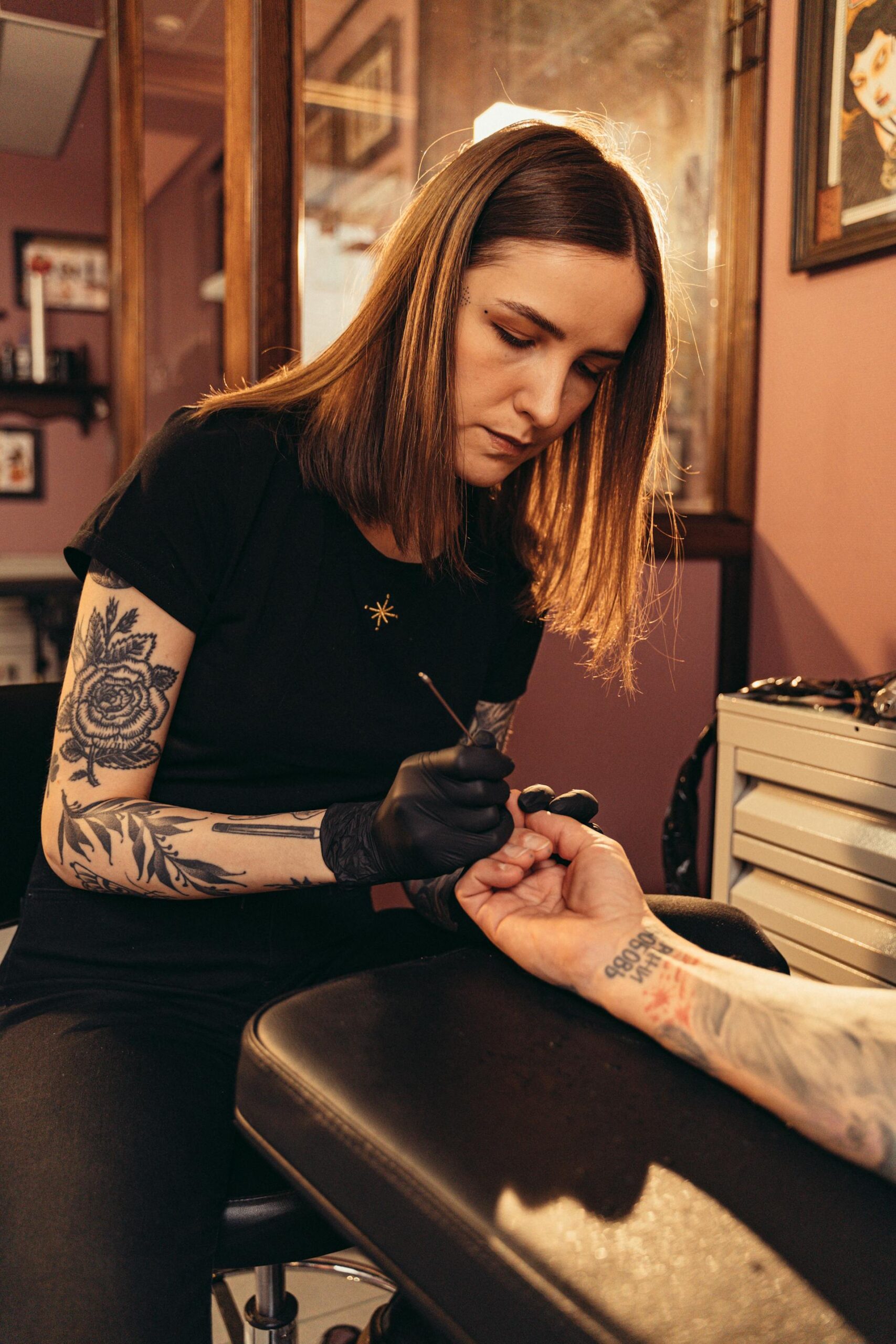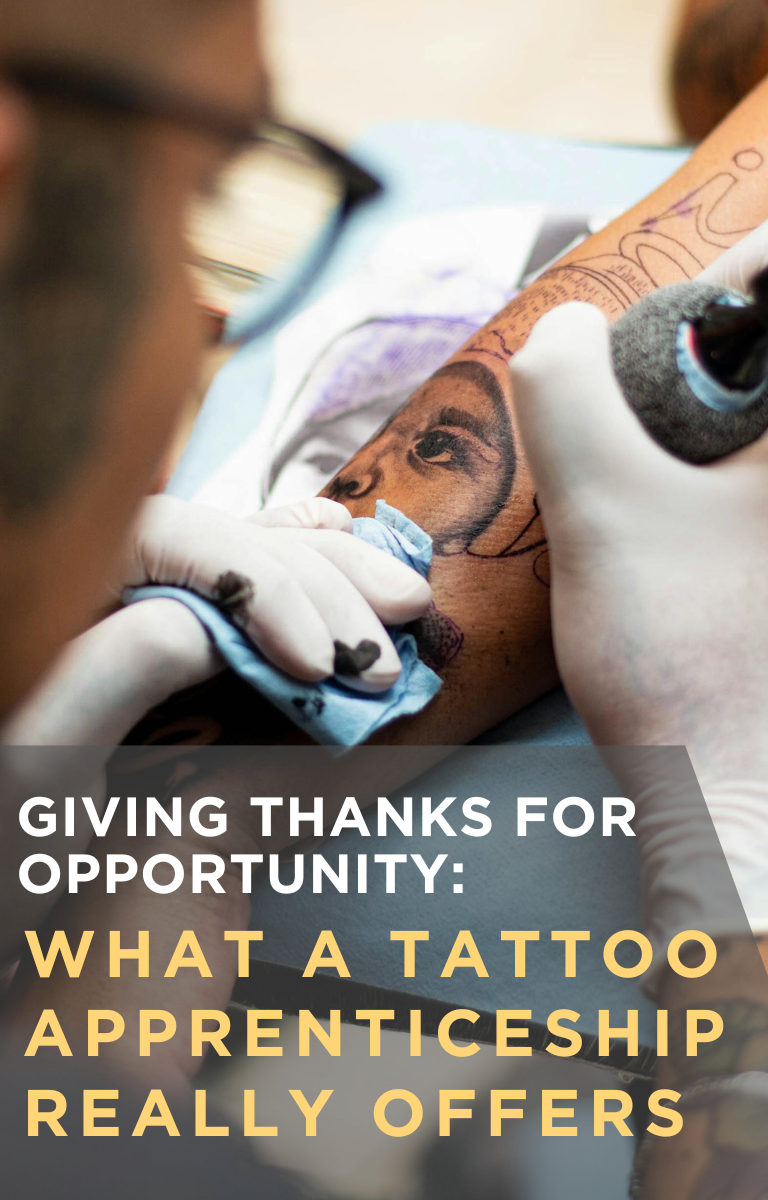Blackwork and Geometric: The Power of Simplicity
Blackwork tattoos rely exclusively on black ink, using solid fills, bold outlines, and intricate patterns. Geometric tattoos, often grouped with blackwork, use lines, symmetry, and repetition to form visually balanced designs.
These styles explore negative space, the untouched skin that shapes the artwork. They require careful planning and steady execution because mistakes can’t be hidden with color.
For aspiring Tattoo Artists, blackwork and geometric tattoos teach spatial awareness, line accuracy, and visual balance: key skills for clean, professional tattooing.
Watercolor: Painting with Ink
Watercolor tattoos mimic the fluid, translucent effect of paint on paper. They often blend bright pigments and soften edges rather than using solid outlines. This technique requires control over dilution, gradient transitions, and layering. While the effect looks spontaneous, it’s a carefully planned balance between chaos and control.
Learning watercolor tattooing helps Tattoo Artists understand color theory, movement, and emotion, perfect for those who love expressive, painterly art.
Japanese (Irezumi): Symbolism and Flow
Japanese tattooing, or Irezumi, is one of the oldest and most respected styles in tattoo history. It’s recognized for its large-scale compositions that flow across the body, telling stories through mythical creatures, waves, flowers, and warriors.
Each symbol holds meaning: koi fish for perseverance, dragons for strength, and cherry blossoms for life’s fragility. Tattoo Artists must understand not only the technique but also the cultural context and visual harmony that define the style.
For beginners, studying Irezumi teaches composition, storytelling, and respect for tattoo traditions.










